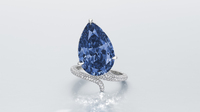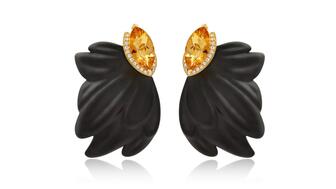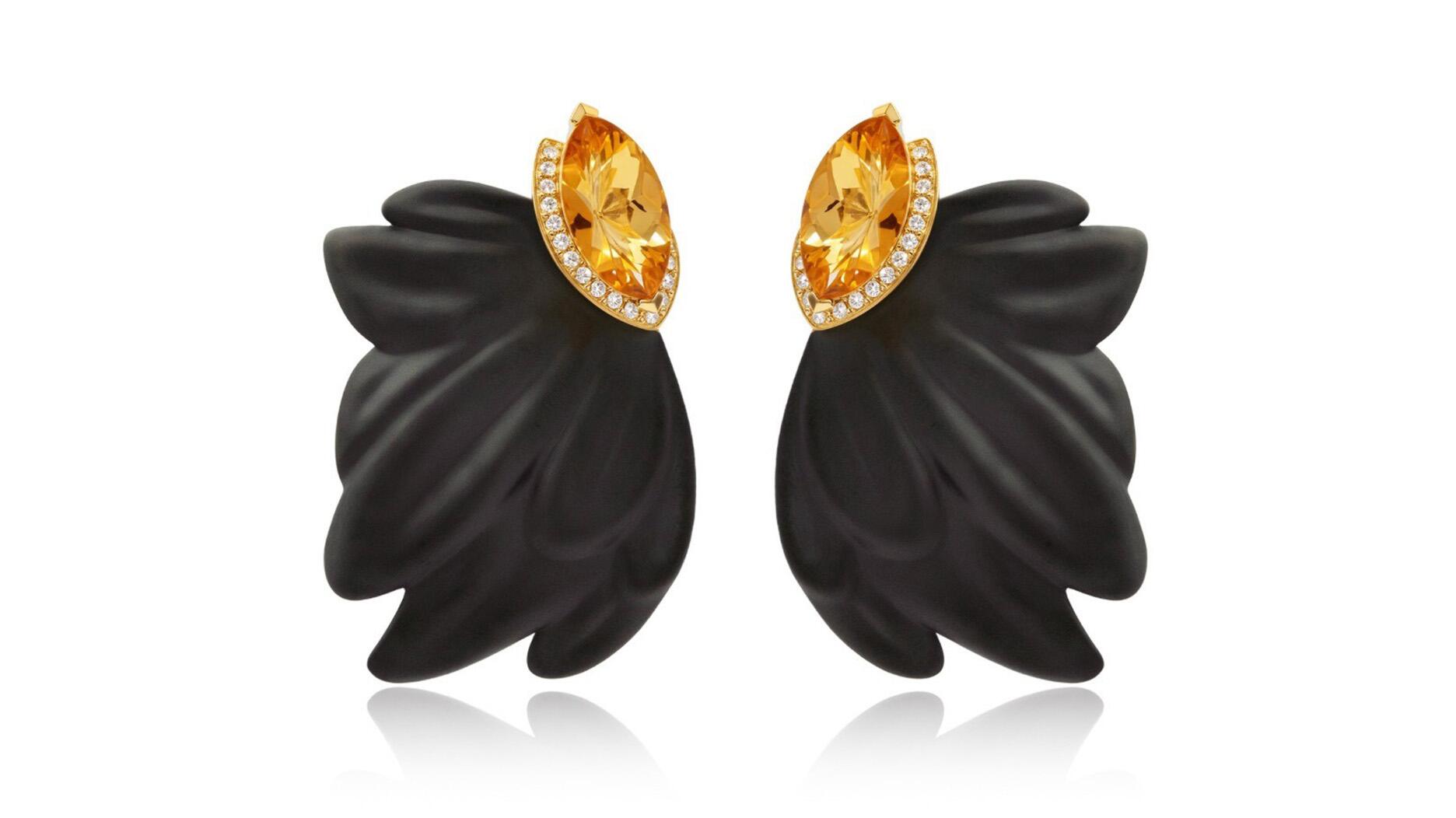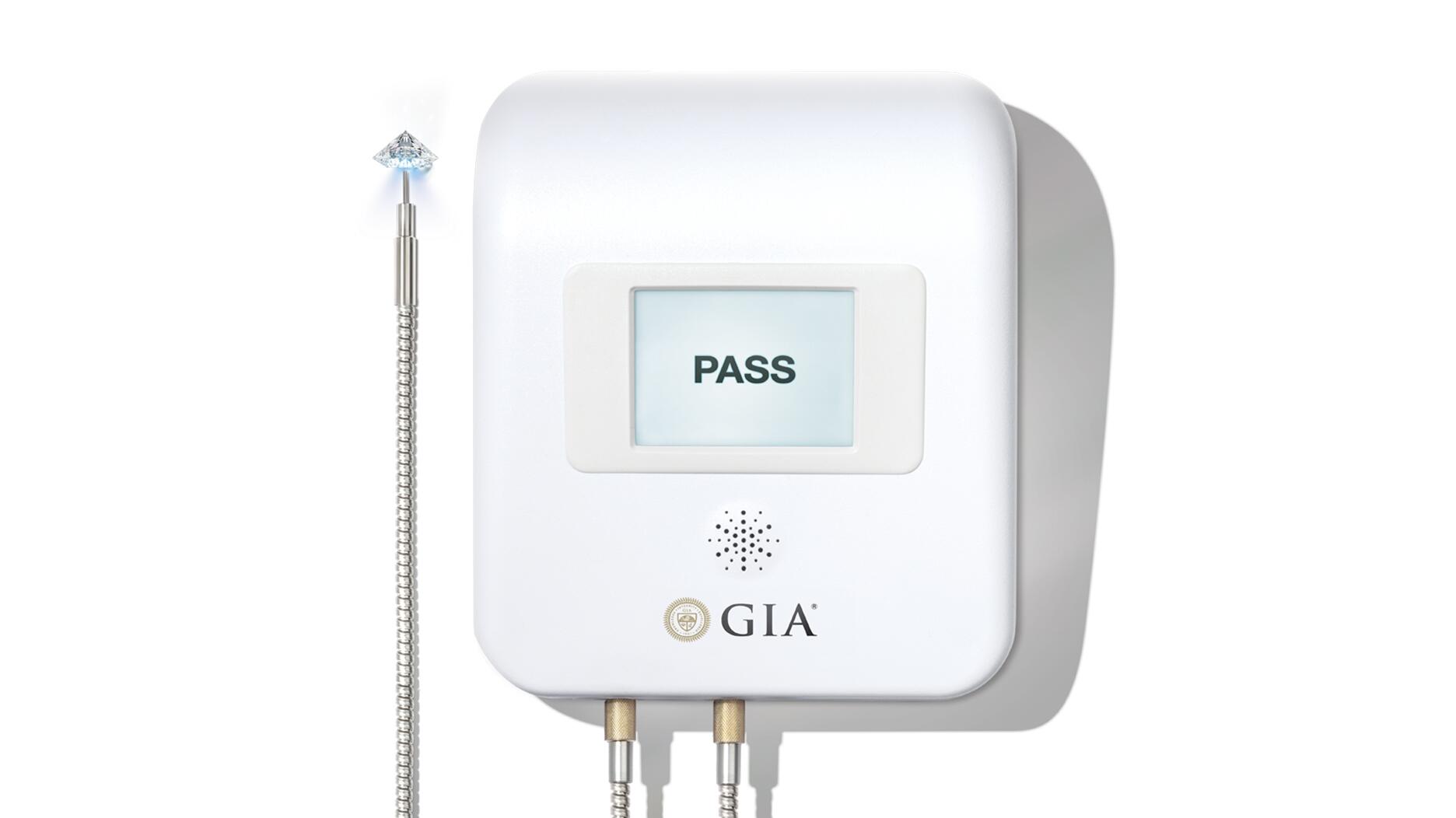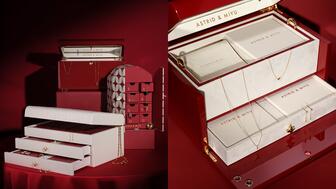The trio of Advent calendars include a version with 18-karat gold and lab-grown diamond jewelry in a red lacquer jewelry box.
"Composite Rubies"
This blog entry was written and submitted to National Jeweler 10X by gem author Antoinette Matlins. Are you one of the increasing number who are buying and selling “composite rubies”—unknowingly? If you buy and sell rubies today, this fact sheet...
This blog entry was written and submitted to National Jeweler 10X by gem author Antoinette Matlins.
Are you one of the increasing number who are
buying and selling “composite rubies”—unknowingly?
If you buy and sell rubies today, this fact sheet on composite ruby – a ruby-like material created by combining lead-glass and corundum – is must reading! Confusion between these and “traditionally treated” rubies containing some small amounts of glass has already resulted in financial loss and damage to reputations, and it will get worse until the confusion is eliminated.
A recent press release from a respected organization stated: "the only difference between the earlier fracture-filled rubies and the newer glass-filled variety is a matter of stability." Nothing is more misleading than such a statement, but even worse, it reflects a lack of knowledge about what these stones really are. When a ruby contains lead-glass—regardless of the amount—the differences are much greater than "stability." Such a product is not "the same thing" as a ruby traditionally treated with minimal glass in a fracture or in which some glass residue is present in small fissures. It is an altogether different product that is much less durable, requires greater—and different—care, won’t stand the “test of time,” and has a dramatically lower value.
So the following is provided to help eliminate the confusion about these products in an effort to help gemologists, gem dealers, retailers, designers, and bench jewelers understand the differences and why it is so important to know how to spot them and why you need to have quality control procedures in place to avoid inadvertently misrepresenting what you are selling.
1. What Is "Composite Ruby"?
“Composite” ruby–a substance resulting from combining low-grade corundum with lead-glass – first appeared in the market in 2006. Initially the quantity of stones entering the market was small and so they entered undetected. Since then, the number has skyrocketed and in an increasing number of cases, so has the percentage of the lead-glass component; today, the lead-glass often accounts for much of the stone’s weight.
Today, experts estimate that the majority of commercial grade “rubies” now being sold are actually not traditionally treated ruby, but rather, a mixture of lead-glass and corundum. The presence of lead-glass alone puts these rubies in a different category because with any amount of lead glass, the ability of any grader to accurately characterize the clarity
This material is now being called "composite ruby" by an increasing number of gem testing laboratories around the world, and this is the nomenclature recommended by the ICA laboratory commission as the appropriate nomenclature to use for this material. While the amount of lead-glass present doesn't determine its classification--just the presence of lead-glass at all qualifies it for separate classification--even the best material contains much more glass than what is found in traditionally-treated rubies that may have some glass residue or glass-fillings in fractures; the composite-ruby in the market typically contains a huge percentage of lead-glass, much more than is found in stones improved by traditional methods. Increasingly we are finding that lead-glass constitutes 40-50% of composite rubies, or more! According to some labs, stones containing higher percentages of lead-glass are appearing with dramatically increasing frequency. This is why they are readily available at gem shows around the world for only a few dollars; most of the material in today’s market costs less than $10. per carat, even in large sizes, and much less when buying quantities rather than single stones.
For reasons explained below, an increasing number of groups, including the Accredited
Gemologists Association (AGA) – an organization that has gained international recognition for
its efforts in addressing serious issues affecting the gem and jewelry trade – have taken the position that while these stones have a place in the costume or fashion-jewelry market, they should be sold only in ways that make it clear they are imitations and that they are not genuine rubies. According to an increasing number of experts in the United States, composite rubies do not have the qualities required by the Federal Trade Commission (FTC) in the USA to be represented as either “rubies” or “gems.” They look great—in fact, they often look like very fine rubies, of fine color—but they are not what they appear to be. Buyers need to be aware that this material should not be confused with natural or traditionally-treated ruby nor should it be sold as such.
2. In What Other Ways Do Composite Rubies Differ From Traditionally Treated
Rubies Containing Glass?
Composite rubies make great ruby look-alikes, but since they usually have such a high percentage of lead-glass, they are much less valuable, and much more fragile than natural or traditionally treated rubies. Consumers and retailers considering the purchase of a composite-ruby should be aware that these products are much more easily damaged in the course of everyday wear
than natural or traditionally-treated rubies. As a result, composite- rubies lack the longevity of natural or traditionally-treated rubies so their beauty can deteriorate quickly.
Composite rubies coming into contact with a variety of common household substances and various types of surfaces that pose no threat to natural ruby or rubies treated by routine techniques have proved disastrous for composite rubies. During the past year, numerous incidences have been reported which have shown that the lead-glass component of these stones is susceptible to scratching, nicking, fracturing and chemical etching from otherwise routine activities that would pose no threat for natural rubies, traditionally treated rubies, or many other gemstones. In addition:
-- Composite rubies differ in cost/value. As mentioned above, these stones typically cost only a
few dollars per carat while traditionally treated rubies containing glass sell for hundreds to
thousands of dollars per carat.
-- The weight of the stone is misleading because it represents the weight of the ruby and
glass, combined. Thus, when stated as the weight of the "ruby" it is inaccurate and inflated
since frequently 1/3 of the weight, or more, is lead-glass. As a result of the extremely high
percentage of lead-glass in composites, determining the weight of the actual ruby is virtually
impossible without expensive, sophisticated testing.
Traditionally treated rubies that contain glass have minimal amounts of glass present, either
as residue in surface reaching fissures (as a result of very high heat techniques) or i
n
fractures that have been filled with glass (called “fracture-filled” or "in-filled" ruby) to reduce
their visibility or reflectivity. In traditionally treated rubies containing glass, the amount
of glass is usually much less than the amount of lead-glass added to the low-grade corundum
used to create composite ruby and thus has very little if any impact on the stones' carat weight.
-- One cannot easily determine where the lead-glass ends and the ruby begins in a
composite ruby so it is much more difficult to judge the stone's clarity accurately.
Since the corundum is mixed with lead-glass, which has a refractive index (RI) much closer
to that of ruby, it is much more difficult to accurately judge the clarity for grading
purposes and, perhaps even more important with composite rubies, it is much more
difficut (if not impossible) to determine whether or not there are any serious fractures
that could make the stone more prone to damage from an accidental blow in the course
of normal wear, or when setting or un-setting the stone..
3. Why Does Composite Ruby Need Greater Care Than Traditionally Treated
RubyWith Glass?
Composite rubies require much greater care than traditionally treated ruby— including extreme care in the course of normal wear—because of the unusually high percentage of
lead-glass present. Lead-glass does not have the hardness of ruby, it lacks the toughness of ruby, it is susceptible to many chemicals and acids that won’t hurt ruby at all, and it can suffer damage from much lower heat than ruby.
-- Composite rubies make great ruby "look-alikes" but every precaution must be taken
to avoid contact with substances harder than lead-glass to prevent scratching and to
protect the stone against accidental knocks or blows that can cause chipping of the lead-
glass, or worsening of scratches or chips already present; pre-existing scratches, nicks or
chips can also be easily worsened with daily wear.
-- Contact with common substances such as lemon juice (which can occur accidentally
while squeezing a lemon over such things as fish or a salad) can cause acid etching
of the lead-glass, wherever it reaches the surface, ruining the appearance of the stone.
4. Do Bench Jewelers Need To Handle Composite Rubies Differently Than
Traditionally Treated Rubies With Glass?
YES! Bench jewelers are at extremely high risk unless they are able to distinguish composite-ruby
from traditionally treated ruby. They must exercise extreme care because composite-rubies look
like ruby but don't respond in the same way to basic techniques jewelers are accustomed to using
when working with ruby. It is imperative that bench jewelers know how to spot composite rubies
because bench jewelers are at great risk of damaging any composite ruby present in any piece of
jewelry on which they are working. Bench jewelers must take every precaution when working with
rubies; those who have had to deal with the consequences of ruining a composite ruby warn that it is
not possible to be “too careful” when handling any ruby today!
-- Composite-rubies cannot be subjected to routine bench techniques and can be quickly
and irreparably damaged doing simple, basic jobs such as re-sizing, re-mounting,
or re-plating with rhodium. Immersion in the jeweler's "pickle," and use of a torch for only
a few minutes, will do extensive, irreparable damage to the appearance of the stone.
Why Is The Risk Higher When Working With Composite Ruby Than It Is When Working With
Traditionally-Treated Ruby Containing Glass ?
-- A traditionally-treated ruby with glass residue in surface fissures or glass fillings in
fractures also requires special care (especially where chemicals and heat are
concerned) but if damaged, the impact on appearance is much less noticeable and
can usually be repaired with little or no effect on the value of the stone. This is not the
case with composite rubies; a damaged composite ruby is a total loss. There have
been reported cases where a composite ruby has crumbled apart at the jeweler’s bench!
Some jewelers have sent them to a cutter for re-polishing in the hope of salvaging the situation,
but the resulting weight loss and size reduction is obvious, and the cost to re-cut the stone
is usually much more than the cost of the original composite ruby.
5. Do Composite Rubies Pose Greater Risk To The Jewelry Trade Than
Traditionally Treated Rubies With Glass?
Yes, composite rubies pose a greater risk to the trade because they are not being identified
as something that is different from traditionally treated ruby, despite the serious differences
in durability, longevity, and value.
-- Composite rubies are sold at gem shows worldwide at prices typically ranging from a
few dollars per carat up to $25 per carat (and in very rare cases, as much as $100 per carat),
but most composite rubies sell for under $10 per carat, regardless of size. However, as a
result of confusion related to what they are, most composite rubies are being misrepresented
and sold as "traditionally treated ruby" at highly inflated prices, often in the hundreds
to thousands of dollars per carat. This appears to be the case with several major, national
retailers in the USA, where composite-rubies are being sold at highly inflated prices. For
example, a 2.5 carat ruby—that anyone can buy in Tucson or at any other gem show for just a
few dollars per carat—set in 14 karat gold, with numerous commercial-quality diamonds
weighing under 1/4 carat, total weight, was sold at one of these chains for over $3,000!
But it doesn't stop with chain stores. Composite rubies are now being misrepresented
as "traditionally treated ruby" and sold at inflated prices in other venues, including auctions
and antique and estate jewelry shows, sold by reputable—and unsuspecting—antique and
estate dealers. Gems & Gemology just reported receiving an antique piece with natural pearls
and what appeared to be a very fine ruby at its center, which was found to be a “lead-glass filled”
ruby--a composite! Composite-rubies are also beginning to appear in traditional jewelry stores,
being misrepresented and sold as traditionally treated ruby, at inflated prices. And making
matters worse, many appraisers who have not kept current about this issue are failing to properly
disti
nguish between composite ruby and traditionally-treated ruby with glass residues or
in-fillings, resulting in inflated appraisal valuations.
-- If sold at prices amounting to a few dollars, as "fashion" or "costume" jewelry, no one
would care if they get scratched or damaged with normal wear, nor would anyone
bother to take them to a jeweler for remounting, etc. But this is not currently the
case; people are paying inflated prices for something they believe to be a "ruby"
when it is an entirely different product, and if damaged by a retailer or bench
jeweler they cannot be repaired. In such cases, the customer -- who usually does not
know what they have, and who will certainly not believe they did not have a fine ruby
unless this was pointed out immediately when they left what they believed to be a
"precious" gem with the jeweler -- will expect remuneration for whatever they paid for
it (usually much more than it's worth) or expect replacement with a “real ruby." In these
cases, in addition to the financial loss, the jeweler’s reputation is also damaged and the
customer is probably lost forever.
Where Risk To The Trade Is Concerned, How Do Composites Differ From Traditionally
Treated Ruby That Contains Glass?
There is much MORE risk of financial loss or damage to one’s reputation when selling or
working on a piece of jewelry containing a composite-ruby than there is when selling
or working on a piece of jewelry containing rubies treated by traditionally accepted techniques,
even one with glass residue in fissures or one that has been fracture filled. In cases where damage
does occur with a traditionally “treated” ruby, re-polishing or re-filling can usually restore the
stone to its prior appearance, at minimal or no cost to the bench jeweler/retailer, and without
affecting the value of the ruby. While damage to a traditionally-treated ruby can be repaired with little
or no loss in stone weight or value, this is NOT the case with composite ruby; a damaged composite
ruby is usually a total loss!
A SUMMARY OF THE DIFFERENCES BETWEEN COMPOSITE RUBY AND TRADITIONALLY TREATED RUBY WITH GLASS
When the glass used in the treatment is lead-glass, regardless of the actual amount of lead-glass present (although 30%-60% seems to reflect the current norm), the differences between such a stone—a composite ruby—and a natural or traditionally treated ruby with glass in fissures or in which fractures have been glass-filled, are much greater than "stability." Composite rubies are not "the same thing" as a traditionally treated ruby with minimal normal glass in a fracture or in which glass residue is present in small fissures; composite rubies are NOT traditional glass-filled rubies. They are an altogether different product that is much less durable, has limited longevity, requires very different care, has a dramatically lower value, and does not qualify as either a “ruby” or a “gem.”
There is a market for composite ruby, and probably a very large market, but not as a genuine ruby, traditionally treated or otherwise. There must be a clear distinction made between composite ruby and other rubies in the marketplace. Retailers, manufacturers, designers, bench jewelers, and appraisers must understand the differences and be able to recognize and distinguish between them. And consumers must also be educated about these stones so that they understand they are in the marketplace, and so that they can make informed choices about their purchases.
The Latest
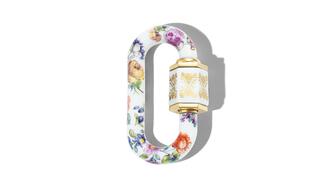

Created in collaboration with Nymphenburg Porcelain, the lock is part of a four-piece collection that took two years to bring to fruition.

Jewelry industry veteran Alisa Bunger has taken on the role.

The upcoming show provides savvy retailers with the opportunity to stock their cases with best sellers in advance of the holiday season.

The company and industry leader’s two-decade tenure with De Beers will come to a close at the end of the month.

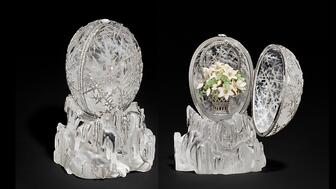
“The Winter Egg” set the world auction record for a Fabergé piece twice at previous Christie’s sales.
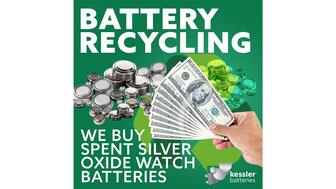
The company will pay 1.5x silver’s current spot price for each pound of silver oxide batteries submitted.
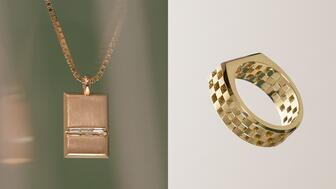
The line includes a “Shadow” series crafted exclusively for the new men’s offering and reimagined styles from the brand’s core collections.
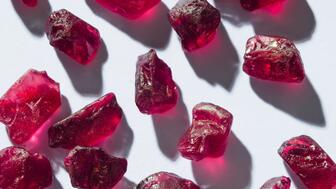
The rough on offer was recovered from a newer area at the Montepuez mine.
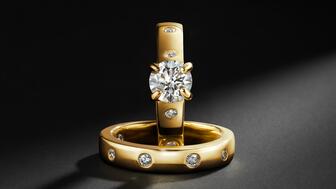
The retailer’s new collection of engagement rings and fashion jewelry is set with natural diamonds that are traceable via blockchain.
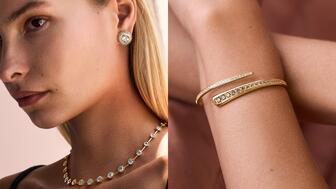
The champagne colorway in her newest “Ombré” collection combines white and trendy brown diamonds, a departure from her usual vibrant hues.
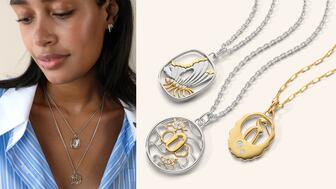
Kosann partnered with the Museum of Fine Arts, Boston, to create a set of necklaces inspired by the artwork on samurai sword handguards.

Carlos Jose Hernandez and Joshua Zuazo face life in prison for the October 2024 murder of 72-year-old Detroit-area jeweler Hussein Murray.

The brand’s first high jewelry collection, “Tempest” plays with movement while calling to mind the folklore of the sea.

Proceeds from its jewelry raffle will go to a volunteer-run fire and rescue group in the Lightning Ridge area of New South Wales, Australia.

Stuller said the recipients embody the company’s core values, which include community participation and personal and professional growth.
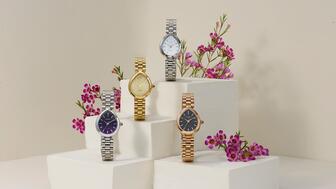
Citizen’s new “Rainell” women’s watch has a raindrop-shaped case and is available with a silver-, gold-, purple-, or green-colored dial.
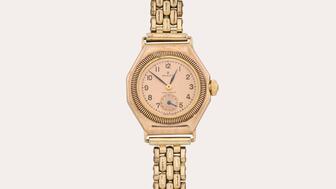
The “Mercedes Gleitze Rolex Oyster,” named for the British endurance swimmer who made it famous, will go up for sale next month.

Amit Pratihari was previously the managing director of De Beers India and Forevermark India.

Members of the Jewelers 24 Karat Club of Southern California will gain access to expanded services, resources, and connections, DCWC said.
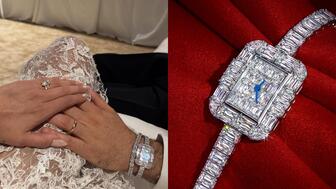
Gomez’s jewelry included Tiffany & Co. drop-style earrings while Blanco stacked diamonds from Jacob & Co. on his wrist.

Diamond industry banking veteran Paul De Wachter will take on the role in January 2026.
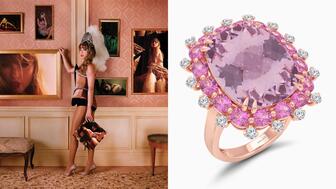
Taylor Swift flaunts an Elizabeth Taylor-esque gemstone in promo for her new album, “The Life of a Showgirl.”

Its “Quantre Sand” capsule was made using a 3D sand printing technique borrowed from the automotive and aeronautics industries.

Four individuals have been charged in the “takeover-style” robbery of Heller Jewelers last month, and additional charges are expected.
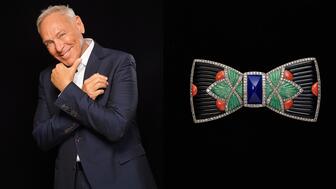
“Radiance and Reverie” will showcase more than 150 jewels from Lane’s personal collection by Tiffany & Co., Cartier, and more.



